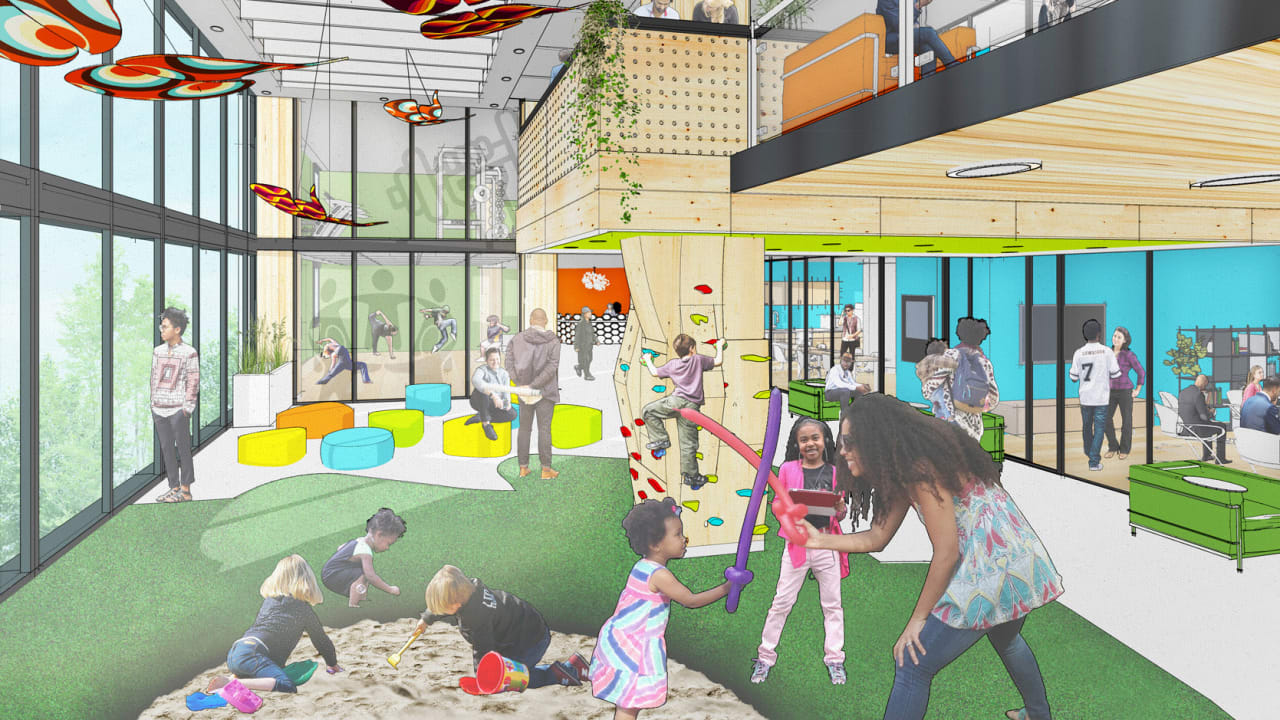 |
| blog.google |
Another beautiful early summer afternoon and Yours Truly is back with this friendly reminder to Do the Five. Believe it or not, The Primaries roll in New York and Kentucky where all eyes are on the Democratic Senate race between former Marine aviator Amy McGrath and insurgent candidate 43rd State Representative Charles Booker. The winner will meet Republican incumbent and Senate Majority Leader Mitch McConnell. Both the primary and general election race will be a wild ride to the finish.
Meanwhile, hot on the heels of the disastrous relaunch of his campaign, Mr. Donald Trump held another in Phoenix, Arizona. This time he spoke to a smaller crowd, more crowd from Students for Trump at a local mega-church. It was a typical rally, long on airing of grievances and pity party, very short to non-existent on policy. The packed house through caution and their masks to the wind despite the fact that Arizona has seen an uptick in COVID-19 infections. Onward
 |
| Rendering of re-imagined Atlanta Jail Designing Justice + Designing Spaces fastcompany.com |
The tragedies of Breonna Taylor, George Floyd, and Rayshard Brooks have touched off a nationwide call for defunding the police. Yours Truly is not going to take up what defunding the police actually means today because Blogger needs more time to learn about the subject. Instead, Yours Truly would like to take at how the Atlanta is transforming itself into a center for justice and equity. Shall we have a look?
The city of Atlanta built a massive 11-story jail in the downtown area, intended to house 1,300 inmates for misdemeanor crimes. Now the city plans to convert it into a new center for equity (fastcompany.com; June 15, 2020; date accessed June 23, 2020). The plans for the center could include a mental health service, re-entry programs, a credit union, and urban farm (Ibid). As of writing, the proposal by the firm Designing Justice + Designing Space (designingjustice.org; June 23, 2020), is going through public discussion. Adele Peters reports, "Although calls for dismantling the current criminal justice system are escalating in Atlanta now--...--the plans to transform the jail have been underway for months" (fastcompany.com; June 15, 2020). Architect Deanna Van Buren, co-founder of the design firm, sees this as part of a series of projects focused on transforming the mass incarceration infrastructure (Ibid).
| Members of Designing Justice + Designing Space Photo by Oretola Thomas designingjustice.org |
What we had before and have today is an architecture of oppression, built on the backs of slaves and the bodies of prisoners,...Now we are in a moment of protest and listening. What we will need is an architecture of liberation (Ibid).
Atlanta is not the only place where older buildings are being adapted as centers for restorative justice.
| Restore Oakland Oakland, California restoreoakland.org |
The designers of Restore Oakland, in Oakland, California, are adapting an old building into a center that includes rooms for restorative justice, where victims and perpetrators can meet to work through the process of forgiveness and reconciliation. Ms. Peters writes, "The designers carefully though through how the space could support that process--" (fastcompany.com; June 15, 2020). The building is accessible to public transportation, warm, private, and includes safe spaces to people to retreat if the conversations become too much to bear. There is evidence to suggest that restorative justice works: "Research suggests that it build empathy and reduces the chance that someone will commit another crime, and that it helps reduce PTSD in victims" (Ibid).
The Oakland center also features an on-site cafe where people in the program--and community members--can receive job training and support in launching their own food business. Other space is dedicated to other issues-oriented non-profits like immigrant and tenants' rights. Designing Justice + Designing Space helped the non-profits negotiate the purchase of the land, so they cannot be be evicted. The non-profits are already adding community programs. Ms. Van Buren told Fast Company,
| Deanna Van Buren architectmagazine.com |
Designing Justice + Designing Spaces' other projects have dealt with other broken elements of the criminal justice system, like housing for people recently released from prison. Adele Peters reports, "Van Buren recently worked with a group of incarcerated men and women to design a new type of mobile, pop-up plywood tiny home for inmates who have been recently released" (Ibid). A church in Oakland, California will be the first to make use of the new housing typology. Deanna Van Buren told Fast Company,
We're trying to figure out how to make hundreds now, as part of the ramping up, because they provide dignity and privacy at a quarter of the cost of building out a whole room and they can be deployed quickly (Ibid) .
| Atlanta Mayor Keisha Lance Bottoms atlantaga.gov |
Deanna Van Buren began working with the city of Atlanta in 2019, after Mayor Keisha Lance Bottoms signed legislation to shutter the jail. The jail fell into disuse after the mayor had ended cash bail in the city--Ms. Peters adds, "in many cities, people spend days or weeks in jail because they can't afford bail" (fastcompany.com; June 15, 2020). Mayor Bottoms also ended a contract with Immigration and Customs Enforcement to house detainees, and reduced the penalty for conviction of possession of small amounts of marijuana so that no longer results in jail time (Ibid).
For years activists have been vocally advocating for the closure of the jail. As of now, typically 25 out of the 1,000 beds in the jail are filled (Ibid). Ms. Van Buren collaborated with the city on a six-month-long series of meeting with community groups, ranging from former inmates to local business to consider the highest and best use of the space. She told Fast Company,
We developed a lot of tools, everything from games to interactive models that we could bring into community to get their input on what should be put in what's now called the Center for Equity (Ibid)
Recently, the designers present the city with a series of options for the site, now under consideration by the community.
| Reimagining Atlanta City Detention town hall Photo courtesy Designing Justice + Designing Spaces fastcompany.com |
One design proposes to re-purpose the existing building for multiple uses by removing the cell walls and designing a new facade that brings light into the space. The mezzanine floors would be reduced to add more light. The existing outdoor recreation spaces would be transformed into urban farms that would also provide food to the neighborhood. Another option is the detention center being demolished, replaced by three new buildings that fit more naturally into the community. Another iteration is completely demolishing the site, transforming it into a park; then build smaller "Centers for Equity" in different locations around Atlanta, instead of one central location (Ibid).
Community members who headed the project's task posit that replacing the jail will make the city safer. A new task force report reads,
People need services, not jail cells,... The best way to make our safer is to make it safer is to make it an equitable city. To ensure that opportunities, jobs, and wellness are available to all our city's residents, including the most vulnerable and marginalized. People do not steal food from grocery stores because they love to commit crimes--they steal because they are hungry. It is in everyone's interest to allow all people to have economic opportunity (fastcompany.com; June 15, 2020).
The city of Atlanta is expected to makes its final decision this year about which direction to follow, however the process has been fast forwarded in the wake of the protests over police brutality. Mayor Bottoms recently proposed "a new $400 million bond, some of which will be used to pay for repurposing the center. Deanna Van Buren said,
You're starting to see political will,... You can see it all over the country. All of a sudden, now we' re ready to put money into something different (Ibid).
Deanna Van Buren added, "Smaller changes,... are not enough" (Ibid). In the past, architects, like Frank Gehry, designed prisons that were more humane and better-looking. Ms. Van Buren continues,
Architects still are trying to deal with that system,... And we're still like, that system is structurally racist, and you can't make it look better and solve the problem. That's not the problem to be solving
No comments:
Post a Comment